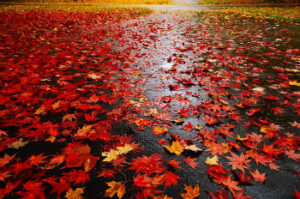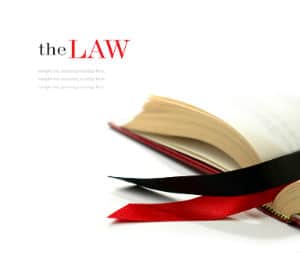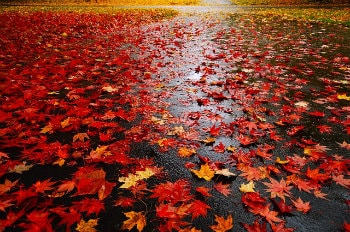Autumn is a beautiful season; but equally dangerous. We all appreciate the beauty around us during the autumn season from the colorful leaves to the pumpkin-spiced fragrances, it is undeniably splendid. However, it is a season that can be fraught with danger as the chances of falling are heightened. Fallen leaves obscure slip risks on the ground. Wet leaves create slippery, dangerous surfaces without grip that make slipping and falling more likely.
When left to pile up beneath components, these leaves form a slick surface that also covers any possibly hazardous flaws to the ground beneath, such as pot holes, pavement cracks and loose cobblestones. These conditions pose very serious risks to people as they can easily cause one to slip, trip, and fall and be injured on another person’s premises – either residential or commercial. OSHA cites that 15% of slip, trip and fall cases result in accidental deaths.
Autumn Leaves Precautionary Measures
To fight slip-slide-fall syndrome, property owners must apply practical caution in keeping their property safe for  people who access it. The owner must spearhead inspections in both the interior and exterior of the building; in places such as walkways, lawns, parking areas and driveways. Inspections assist property owners to discover perils so that the threat can be fixed as well as warning visitors of the danger.
people who access it. The owner must spearhead inspections in both the interior and exterior of the building; in places such as walkways, lawns, parking areas and driveways. Inspections assist property owners to discover perils so that the threat can be fixed as well as warning visitors of the danger.
Constructive notice comes into play when the owner does not have actual notice of the potential hazard; however, the owner would have learned of the danger if he or she took the time required to notice the hazard – well, just like any other judicious and sensible property owner would do. Property and businesses owners know, or better still should know about these totally probable seasonal hazards and have an obligation of maintaining their property in such a way as to safeguard those who have access to it from the danger of a fall.
What Happens After A Fall
Sadly though, many people usually slip and fall and sustain injuries in public places due to wet leaves but fail to realize that they can claim compensation. If you were to slip on a wet floor in a restaurant, a compensation claim would be filed against the management in charge of maintaining health and safety on the property. In the case of wet leaves, it is usually the owner of the premises or your local council that are responsible. Often, if a person sustains injuries from a slip and fall accident, it’s usually due to some negligence or omission on the property owner’s part. This is in view of the fact that the property owner knew or should have known that the hazard existed. In such a case, the injured party is entitled to seek compensation for their injuries.
While you don’t expect your local council to control the weather and the seasons, it is their duty to ensure that fallen leaves do not become harmful to people. The same applies to pot holes, which are the result of wet weather conditions.
The Question Of Causation
However, when a slip and fall litigation is filed in court, the process isn’t as simple as indicating the particular hazard and showing that the management was negligent at some point. A lot of slip and fall cases fail or succeed on the question of “causation”. In a slip and fall injury case, the attorney of the injured person must show clearly causation between the neglect of the management and the damages incurred by the injured person.
and showing that the management was negligent at some point. A lot of slip and fall cases fail or succeed on the question of “causation”. In a slip and fall injury case, the attorney of the injured person must show clearly causation between the neglect of the management and the damages incurred by the injured person.
Causation hereby means that in the absence of that negligence by the property owner, the injury would not have happened. The victim’s injury lawyer must demonstrate in a systematic manner the actual causal chain beyond any reasonable doubt. It is thus advisable to consult a well-practiced personal injury lawyer so as to know your various legal options.

